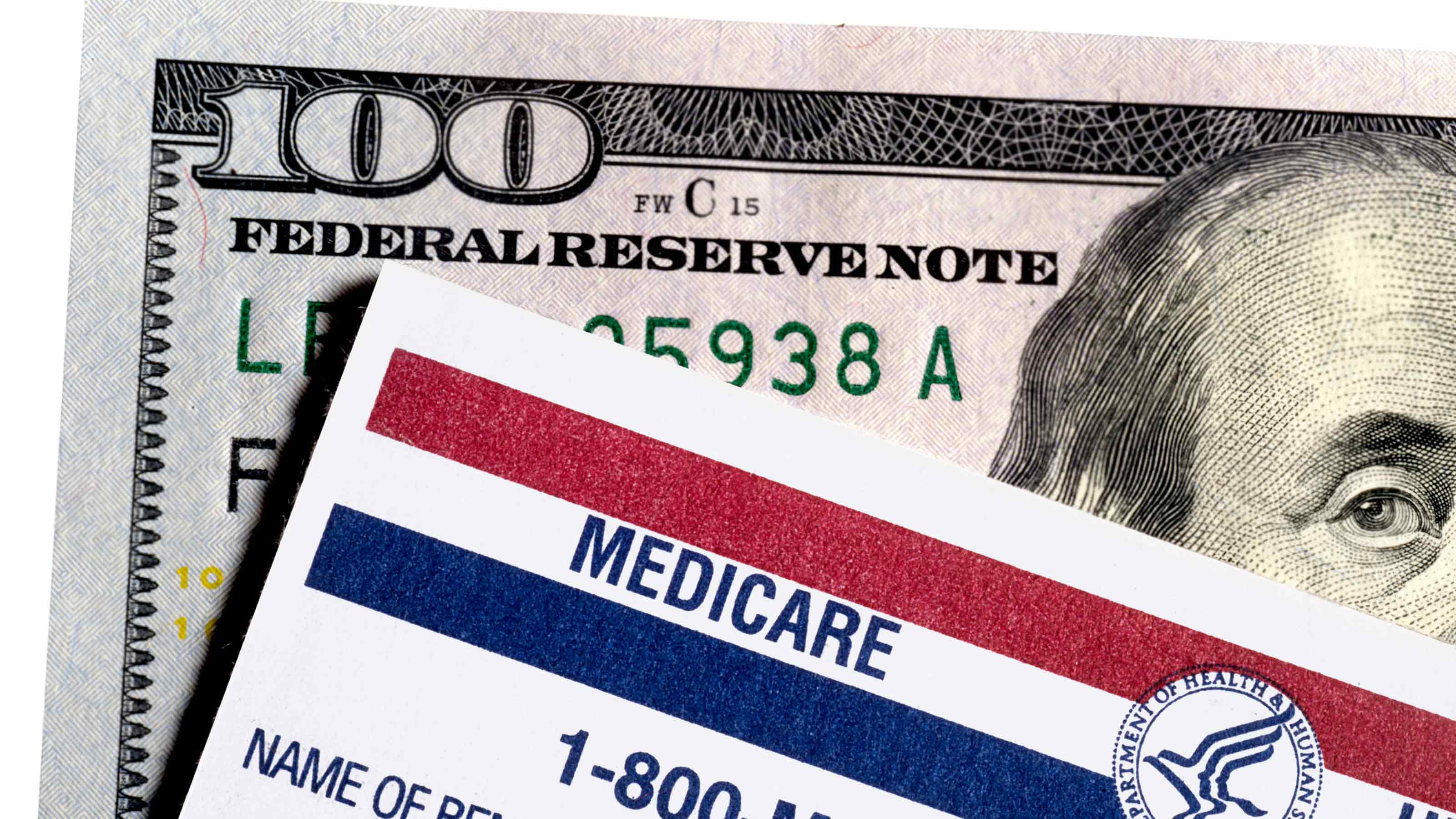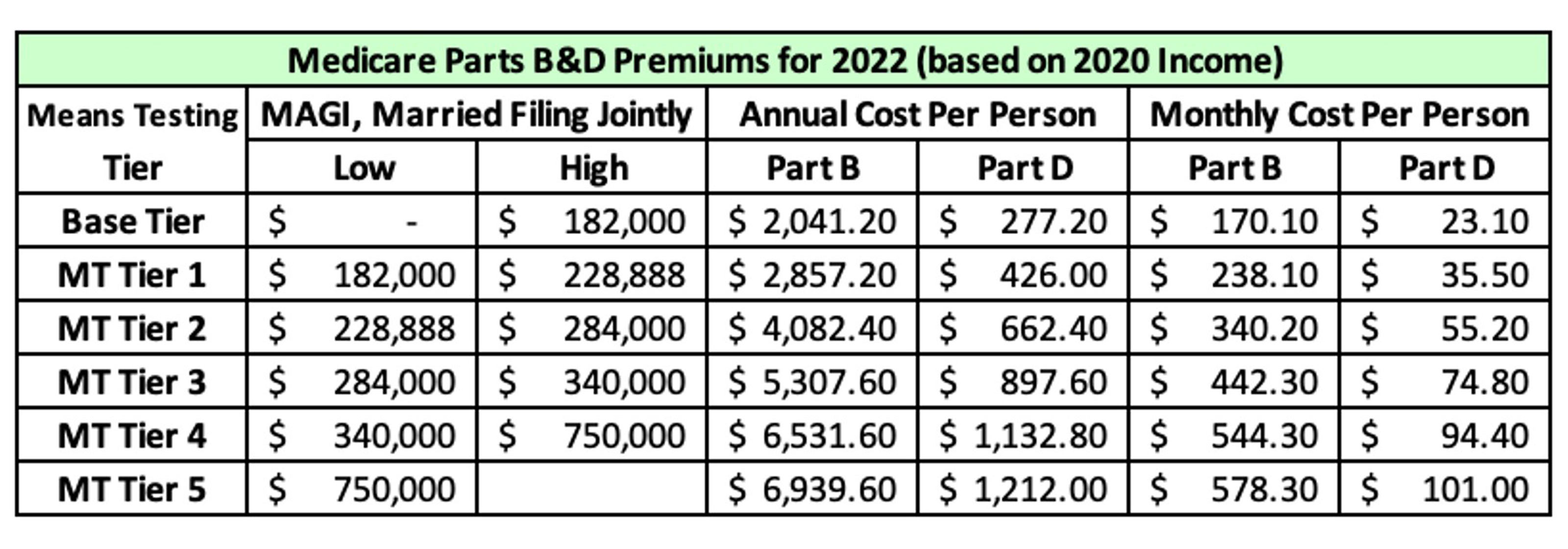Watch Out! RMDs Can Trigger Massive Medicare Means Testing Surcharges
Saving too much in tax-deferred retirement accounts could mean you’ll pay hundreds of thousands more than necessary on Medicare premiums in retirement. For some couples, the hit could even top $1 million. Here’s what you need to know.


Editor’s note: This is part three of a seven-part series. It dives more deeply into how high income from required minimum distributions (RMDs) can cost retirees hundreds of thousands of dollars in Medicare surcharges. If you missed the introductory article, you may find it helpful to start here.
No one wants to pay hundreds of thousands of dollars or even over $1 million more than they have to for Medicare in retirement. But due to means testing, that’s what could happen if you’re a diligent saver who stashes every penny you can into your 401(k) or other pre-tax retirement savings account.
This article is a summary of a ground-breaking white paper I published in 2019, in case you want to dive deeper into the history and mechanics of Medicare means testing. All general data cited in today’s article about Medicare can be found in the 2019 paper.
From just $107.88 $24.99 for Kiplinger Personal Finance
Become a smarter, better informed investor. Subscribe from just $107.88 $24.99, plus get up to 4 Special Issues

Sign up for Kiplinger’s Free Newsletters
Profit and prosper with the best of expert advice on investing, taxes, retirement, personal finance and more - straight to your e-mail.
Profit and prosper with the best of expert advice - straight to your e-mail.
How Medicare Premiums Work
Traditional Medicare services consist of Part A (hospital care), Part B (doctor) and Part D (prescription drug) coverage. Many retirees mistakenly think Medicare is free because they’ve been paying Medicare taxes into the system for their working lives. But for most retirees, only Part A is free, while Part B and Part D have monthly premiums, usually deducted from retirees’ Social Security checks.
As my white paper indicates, Medicare Part B costs rose 8.8% annually from 1970 to 2019, a shockingly high rate over an extended period. That’s similar to the inflation rates we’ve been experiencing in 2022, but instead over a 49-year period. High compound inflation rates like this can have a devastating impact over time.
The government subsidizes Medicare costs by setting the base premium equal to 25% of projected per capita costs, meaning the government is covering the other 75% for most (but not all) retirees. Despite the subsidies, significant cost increases have been passed on to retirees. Base Medicare Part B premiums rose 7.5% annually from 1966 to 2019 (from $3.00 a month to $135.50 a month). In comparison, the core annual inflation rate (at least through 2019) has been about 2.3%.
Medicare itself faces solvency questions even more severe than Social Security. The only way to improve the solvency of Medicare is to raise taxes, reduce benefits or incur larger deficits. That’s not a political statement. It’s math. And it’s why, as of 2019, the Medicare trustees expected Medicare Part B premiums on average to rise 5.17% annually from 2020 to 2027.
What Is Medicare Means Testing?
Following 2003 legislation, the government started reducing the subsidy for high-income individuals, forcing them to pay higher premiums on Part B and Part D beginning in 2007. These higher premiums are known as Income-Related Monthly Adjustment Amount (IRMAA) surcharges or “means testing.” I think of them as avoidable taxes, provided you do some long-term planning.
The charts below show Part B and Part D premiums for 2022 (the Part D premiums are for a plan in Austin, Texas). Premiums are tied to modified adjusted gross income from two years prior, so 2022 rates use income from 2020. Premiums for the highest earners compared to the lowest earners are 3.4 times higher for Part B and 4.4 times higher for Part D.
Premiums for couples filing jointly

Premiums for those filing as singles

At higher income levels the government reduces the per capita federal subsidy, causing retirees to bear a greater portion of the cost. From 2007 to 2019, the base premium increased by 3.1% annually, while premiums for means testing tiers increased from 5.0% to 8.6% annually.
The concept of means testing shouldn’t be a big surprise because the most politically acceptable way to improve Medicare’s finances is to make wealthier people pay more. All the signs suggest means testing will become more severe over time.
From 2009 through 2019, income brackets were not indexed for inflation, and in some years, the government even reduced income brackets. So over time, more people have been getting snared by means testing. Starting in 2020, income brackets were indexed for inflation, which was good news for retirees, but the government could easily halt inflation adjustments to help balance the Medicare books.
RMDs and Medicare Means Testing
Recall from last week’s article on RMDs, the case study of a 40-year-old couple who saved $500,000 combined in pre-tax retirement accounts and continue to max out pre-tax contributions until retirement at age 65.
The couple’s tax-deferred retirement accounts grow to $11.9 million by age 72, when they take their first taxable RMD of $435,820. The RMD snowballs, growing to $1.3 million of taxable income at age 90.
In the table above, the couple is projected to be in means testing tier three from age 74-76 and tier four from age 77 to 90. Their total “base” Medicare Part B and Part D premiums from age 65 to age 90 are projected at $856,526 (in future dollars, with each income bracket inflated using the historical Medicare inflation rate of 5.17% as of 2019). However, the couple will face an additional $1.5 million in Medicare means testing surcharges through age 90.
So far, this series has looked at how tax-deferred saving can create problems with RMD income and Medicare means testing surcharges. My next article focuses on problem No. 3: inherited tax liabilities.
- Part 1: Is Your Retirement Portfolio a Tax Bomb?
- Part 2: When It Comes to Your RMDs, Be Very, Very Afraid!
- Part 3: Watch Out! RMDs Can Trigger Massive Medicare Means Testing Surcharges
- Part 4: Will Your Kids Inherit a Tax Bomb from You?
- Part 5: How to Defuse a Retirement Tax Bomb, Starting With 1 Simple Move
- Part 6: Using Asset Location to Defuse a Retirement Tax Bomb
- Part 7: Roth Conversions Play Key Role in Defusing a Retirement Tax Bomb
- Bonus article 1: 2 Ways Retirees Can Defuse a Tax Bomb (It’s Not Too Late!)
- Bonus article 2: Can My Pension Trigger a Retirement Tax Bomb?
Profit and prosper with the best of Kiplinger's advice on investing, taxes, retirement, personal finance and much more. Delivered daily. Enter your email in the box and click Sign Me Up.

David McClellan is a partner with Forum Financial Management, LP, a Registered Investment Adviser that manages more than $7 billion in client assets. He is also VP and Head of Wealth Management Solutions at AiVante, a technology company that uses artificial intelligence to predict lifetime medical expenses. Previously David spent nearly 15 years in executive roles with Morningstar (where he designed retirement income planning software) and Pershing. David is based in Austin, Texas, but works with clients nationwide. His practice focuses on financial life coaching and retirement planning. He frequently helps clients assess and defuse retirement tax bombs.
-
 What to Do If You Plan to Make Catch-Up Contributions in 2026
What to Do If You Plan to Make Catch-Up Contributions in 2026Under new rules, you may lose an up-front deduction but gain tax-free income once you retire.
-
 If You'd Put $1,000 Into Lowe's Stock 20 Years Ago, Here's What You'd Have Today
If You'd Put $1,000 Into Lowe's Stock 20 Years Ago, Here's What You'd Have TodayLowe's stock has delivered disappointing returns recently, but it's been a great holding for truly patient investors.
-
 How to Max Out Your 401(k) in 2026 (New Limits are Higher)
How to Max Out Your 401(k) in 2026 (New Limits are Higher)In 2026, the maximum contribution limits for 401(k) plans have increased, giving you an excellent shot at maximizing your retirement savings.
-
 8 Practical Ways to Declutter Your Life in 2026: A Retirement 'Non-Resolution' Checklist
8 Practical Ways to Declutter Your Life in 2026: A Retirement 'Non-Resolution' ChecklistHere's how to stop wasting your energy on things that don't enhance your new chapter and focus on the things that do.
-
 To Retire Rich, Stop Chasing Huge Returns and Do This Instead, Courtesy of a Financial Planner
To Retire Rich, Stop Chasing Huge Returns and Do This Instead, Courtesy of a Financial PlannerSaving a large percentage of your income, minimizing taxes and keeping spending in check can offer a more realistic path to retiring rich.
-
 New Year, New Retirement Rules: Here's How You Can Keep Up as the Landscape Changes
New Year, New Retirement Rules: Here's How You Can Keep Up as the Landscape ChangesFor a successful modern retirement, prepare for a longer life, manage high health care costs and prioritize your social life and purpose.
-
 7 Creative Ways to Spend Less and Save More In Retirement, Courtesy of a Financial Pro
7 Creative Ways to Spend Less and Save More In Retirement, Courtesy of a Financial ProWorried you won't have enough money later in life? Try redesigning your vision of retirement, and you may find your savings go further than you thought.
-
 I'm an Annuities Pro: This Is How You Can Cover the Income Gap While Your Social Security Benefits Grow
I'm an Annuities Pro: This Is How You Can Cover the Income Gap While Your Social Security Benefits GrowTaking Social Security later results in higher future income, but that can create an income gap. Annuities can boost income until you file for benefits.
-
 I'm a Financial Pro: You Really Can Make New Year's Money Resolutions That Stick (and Just Smile as Quitter's Day Goes By)
I'm a Financial Pro: You Really Can Make New Year's Money Resolutions That Stick (and Just Smile as Quitter's Day Goes By)The secret to keeping your New Year's financial resolutions? Just make your savings and retirement contributions 100% automatic.
-
 Domestic vs Offshore Asset Protection Trusts: A Basic Guide From an Attorney
Domestic vs Offshore Asset Protection Trusts: A Basic Guide From an AttorneyLearn the difference between domestic asset protection trusts and foreign or offshore asset protection trusts to help you decide what might work best for you.
-
 As We Age, Embracing Our Own Self-Doubt Can Be a Gift: A Cautionary Tale About Elder Financial Abuse
As We Age, Embracing Our Own Self-Doubt Can Be a Gift: A Cautionary Tale About Elder Financial AbuseAn aging couple hired a company that illegally required large deposits, and then they decided to stick with the company even after an employee stole from them.